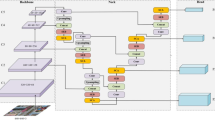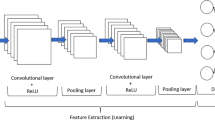Abstract
Aerial images and videos are extensively used for object detection and target tracking. However, due to the presence of thin clouds, haze or smoke from buildings, the processing of aerial data can be challenging. Existing single-image dehazing methods that work on ground-to-ground images, do not perform well on aerial images. Moreover, current dehazing methods are not capable for real-time processing. In this paper, a new end-to-end aerial image dehazing method using a deep convolutional autoencoder is proposed. Using the convolutional autoencoder, the dehazing problem is divided into two parts, namely, encoder, which aims extract important features to dehaze hazy regions and decoder, which aims to reconstruct the dehazed image using the down-sampled image received from the encoder. In this proposed method, we also exploit the superpixels in two different scales to generate synthetic thin cloud data to train our network. Since this network is trained in an end-to-end manner, in the test phase, for each input hazy aerial image, the proposed algorithm outputs a dehazed version without requiring any other information such as transmission map or atmospheric light value. With the proposed method, hazy regions are dehazed and objects within hazy regions become more visible while the contrast of non-hazy regions is increased. Experimental results on synthetic and real hazy aerial images demonstrate the superiority of the proposed method compared to existing dehazing methods in terms of quality and speed.












Similar content being viewed by others
References
Abadi M, Barham P, Chen J, Chen Z, Davis A, Dean J, Devin M, Ghemawat S, Irving G, Isard M (2016) Tensorflow: a system for large-scale machine learning. Proceedings of the Operating systems Design and Implementation 16:256–283
Achanta R, Shaji A, Smith K, Lucchi A, Fua P, Süsstrunk S (2012) SLIC superpixels compared to state-of-the-art superpixel methods. IEEE Trans Pattern Anal Machine Intell 34(11):2274–2282
Berman D, Treibitz T, Avidan S (2016) Non-local image dehazing. Proc IEEE Conf Comput Vis Pattern Recognit, pp 1674–1682
Cai B, Xu X, Jia K, Qing C, Tao D (2016) Dehazenet: an end-to-end system for single image haze removal. IEEE Trans Image Process 25(11):5187–5198
Farabet C, Couprie C, Najman L, LeCun Y (2013) Learning hierarchical features for scene labeling. IEEE Trans Pattern Anal Mach Intell 35 (8):1915–1929
Gonzalez RC, Woods RE (2002) Digital image processing, 2nd edn. Publishing House of Electronics Industry 455, Beijing
He K, Sun J, Tang X (2011) Single image haze removal using dark channel prior. IEEE Trans Pattern Anal Mach Intell 33(12):2341–2353
He K, Sun J, Tang X (2013) Guided image filtering. IEEE Trans Pattern Anal Mach Intell 35(6):1397–1409
Ioffe S, Szegedy C (2015) Batch normalization: accelerating deep network training by reducing internal covariate shift. arXiv:1502.03167
Kingma DP, Ba J (2014) Adam: a method for stochastic optimization. Proceedings of the International Conference on Learning Representations (ICLR)
Lee H, Kwon H (2017) Going deeper with contextual CNN for hyperspectral image classification. IEEE Trans Image Process 26(10):4843–4855
Li B, Peng X, Wang Z, Xu J, Feng D (2017) AOD-net: all-in-one dehazing network. Proceedings of the IEEE International Conference on Computer Vision 1(4):7
Long J, Shelhamer E, Darrell T (2015) Fully convolutional networks for semantic segmentation. Proc IEEE Conf Comput Vis Pattern Recognit, pp 3431–3440
Lu H, Li Y, Nakashima S, Serikawa S (2016) Single image dehazing through improved atmospheric light estimation. Multimed Tools Appl 75 (24):17081–17096
Mannos J, Sakrison D (1974) The effects of a visual fidelity criterion of the encoding of images. IEEE Trans Inf Theory 20(4):525–536
Mao X, Shen C, Yang YB (2016) Image restoration using very deep convolutional encoder-decoder networks with symmetric skip connections. Proceedings of the Advances in Neural Information Processing Systems, pp 2802–2810
McCartney EJ (1976) Optics of the atmosphere: scattering by molecules and particles. Wiley, New York
Nayar SK, Narasimhan SG (1999) Vision in bad weather. The Proceedings of the Seventh IEEE International Conference on Computer Vision 2:820–827
Odena A, Dumoulin V, Olah C (2016) Deconvolution and checkerboard artifacts. Distill 1(10)
Reilly V, Idrees H, Shah M (2010) Detection and tracking of large number of targets in wide area surveillance. European Conference on Computer Vision, pp 186–199
Ren S, He K, Girshick R, Sun J (2015) Faster R-CNN: towards real-time object detection with region proposal networks. Proceedings of the Advances in Neural Information Processing Systems, pp 91–99
Ren W, Liu S, Zhang H, Pan J, Cao X, Yang MH (2016) Single image dehazing via multi-scale convolutional neural networks. European Conference on Computer Vision, pp 154–169
Santra S, Mondal R, Chanda B (2018) Learning a patch quality comparator for single image dehazing. IEEE Trans Image Process 27(9):4598–4607
Singh D, Kumar V (2018) Dehazing of outdoor images using notch based integral guided filter. Multimed Tools Appl 77(20):27363–27386
Sommer LW, Teutsch M, Schuchert T, Beyerer J (2016) A survey on moving object detection for wide area motion imagery. IEEE Winter Conference on Applications of Computer Vision (WACV), pp 1–9
Su S, Delbracio M, Wang J, Sapiro G, Heidrich W, Wang O (2017) Deep video deblurring for hand-held cameras. Proc IEEE Conf Comput Vis Pattern Recognit, pp 1279–1288
Tang K, Yang J, Wang J (2014) Investigating haze-relevant features in a learning framework for image dehazing. Proc IEEE Conf Comput Vis Pattern Recognit, pp 2995–3000
Tarel JP, Hautiere N (2009) Fast visibility restoration from a single color or gray level image. Proceedings of the IEEE International Conference on Computer Vision, pp 2201–2208
Teutsch M, Grinberg M (2016) Robust detection of moving vehicles in wide area motion imagery. Proceedings of the IEEE Conference on Computer Vision and Pattern Recognition Workshops, pp 27–35
Teutsch M, Kruger W (2015) Robust and fast detection of moving vehicles in aerial videos using sliding windows. Proceedings of the IEEE Conference on Computer Vision and Pattern Recognition Workshops, pp 26–34
Wang Z, Bovik AC, Sheikh HR, Simoncelli EP (2004) Image quality assessment: from error visibility to structural similarity. IEEE Trans Image Process 13(4):600–612
Zeiler MD, Fergus R (2014) Visualizing and understanding convolutional networks. European Conference on Computer Vision, pp 818–833
Zhang K, Zuo W, Chen Y, Meng D, Zhang L (2017) Beyond a Gaussian denoiser: residual learning of deep CNN for image denoising. IEEE Trans Image Process, pp 3142–3155
Zhu Q, Mai J, Shao L (2015) A fast single image haze removal algorithm using color attenuation prior. IEEE Trans Image Process 24(11):3522–3533
Author information
Authors and Affiliations
Corresponding author
Additional information
Publisher’s note
Springer Nature remains neutral with regard to jurisdictional claims in published maps and institutional affiliations.
Rights and permissions
About this article
Cite this article
Fazlali, H., Shirani, S., McDonald, M. et al. Aerial image dehazing using a deep convolutional autoencoder. Multimed Tools Appl 79, 29493–29511 (2020). https://doi.org/10.1007/s11042-020-09383-7
Received:
Revised:
Accepted:
Published:
Issue Date:
DOI: https://doi.org/10.1007/s11042-020-09383-7




